#saadat ali khan
Explore tagged Tumblr posts
Text
#FishFriday:
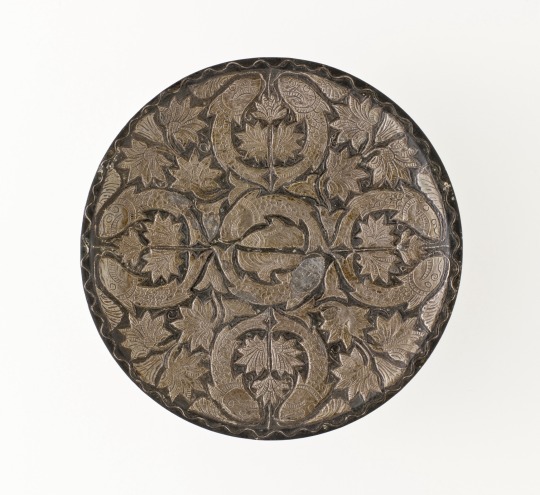
Plate with Emblematic Pairs of Fish (mahi-ye maratib)
India, Uttar Pradesh, Awadh, Lucknow, c. 1880
Bidri-ware (zarbuland technique)
D: 6 3/4 in. (17.15 cm); H: 1/2 in. (1.27 cm)
LACMA M.2001.100
“The primary decoration on this bidri ware plate is a pair of fish arranged head-to-head with their curved bodies forming a circle. Known as the mahi-ye maratib (Fish of Dignity), it was an insignia of exalted rank that the Mughal emperors and earlier Middle Eastern rulers bestowed upon their subordinate chieftains in recognition of valorous military service. In 1720 it was awarded by the Mughal Emperor Muhammad Shah (r. 1719–48) to Saadat Khan, the Governor of Akbarabad (Agra), who soon became the Governor of Lucknow from 1722 to 1739. The fish emblem subsequently served as the dynastic leitmotif of the Lucknow court and was frequently displayed on its decorative arts and palatial architecture. It was represented in state processions as a fish and two gilt globes carried on a standard. A heraldic form consisting of a pair of honorific mermaids bearing a crown and flanking a shield was used as the personal coat of arms of King Wajid Ali Shah (r. 1847–56). Bidri ware is made from a predominately zinc-based alloy, along with smaller amounts of lead, copper, and/or tin. The ornamentation of bidri ware from the Deccan and eastern India typically features inlaid silver sheet or wire designs, which are rendered flush and burnished. Lucknow bidri ware is distinctive in that it is often executed in bold relief (zarbuland technique), in which the inlaid metals are allowed to remain protruding slightly above the surface and are then adorned with sheet overlay and incised motifs.”
#animals in art#19th century art#metalwork#animal emblems#fish#Fish Friday#Indian art#South Asian art#Asian art#colonial art#Bidri ware#LACMA#plate
9 notes
·
View notes
Text


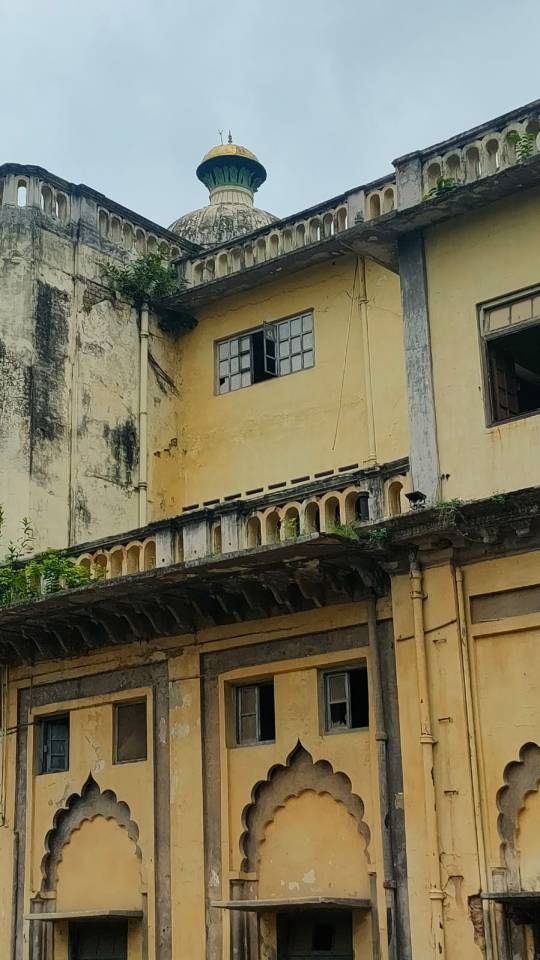
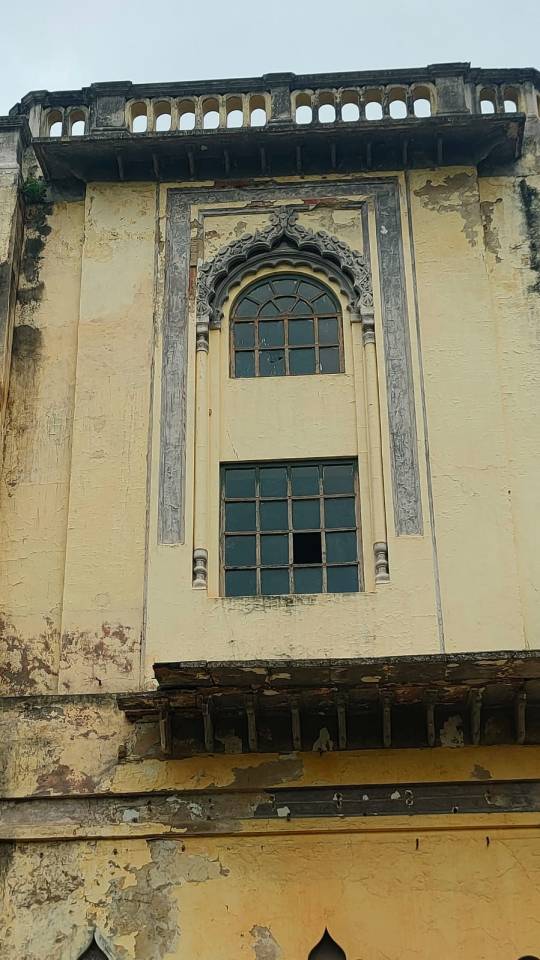

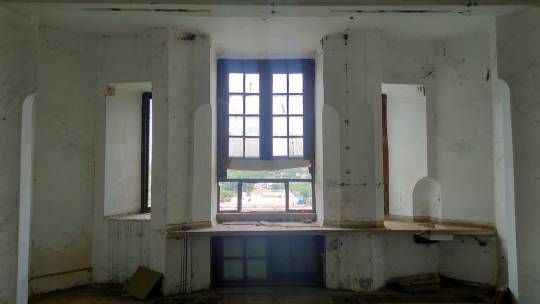

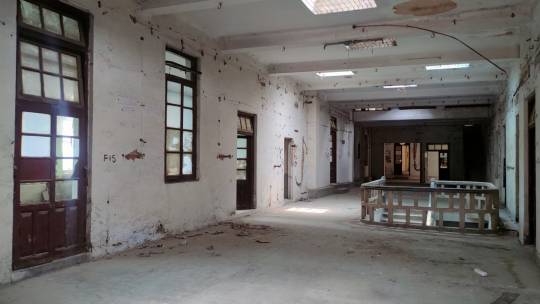


Badi Chatar Manzil in Lucknow, now a haunting beauty in ruins! 🕌✨
Construction was started by Nawab Saadat Ali khan (1798-1814) in the memory of his mother Chhatar Kunwar and completed by his son Nawab Ghazi-ud-din Haider (1814-1827), further elaborated and decorated by Nawab Nasir-ud-din Haider.
It is a living chronicle of the city's illustrious history and echoes the tales of a bygone era, when Nawabs reigned supreme. 🏰✨
Badi Chatar Manzil, often referred to as the 'Umbrella Palace,' stands as a testament to Lucknow's cultural heritage. Its regal presence graced the banks of the Gomti River, hosting lavish ceremonies and gatherings that defined an era.
However, today, Badi Chatar Manzil stands as a haunting beauty in ruins, its walls whispering stories of a bygone era. 🗝️🏚️
#BadiChatarManzil #LucknowHeritage #NawabiElegance #CulturalChronicle #ArchitecturalSplendor #Gomti #HistoricalGem #AbandonedBeauty #DecayedElegance #ExploreRuins #CulturalHeritage #WanderlustAdventures #UttarPradeshDiaries #IndiaTravel #HistoryUnveiled #InstaExplore #TravelGram #HeritageWonders #Lucknow
0 notes
Text
Why this is the best place in Lucknow?
Any guesses 'bout this place?
Today Lucknow is full of modern architectures and places to spend a good time hanging on with friends and family. But there’s a place, named Dilkusha Kothi, we think you didn’t know like we’re going to tell you. There are lot many reasons to declare it best, garnished with some bizarre facts too. And we will tell you exactly about the place, but let’s start with some background knowledge first!
Fo…
View On WordPress
#best place#city of nawabs#dilkusha gardens#dilkusha kothi#dilkusha palace#kothi#lucknow#lucknow bloggers#lucknow tourism#nawabs#saadat ali khan#travel blogger#uttar pradesh tourism#wanderers of lucknow
2 notes
·
View notes
Photo

By Kitkat_ch
Lucknow, Uttar Pradesh, India
#curators on tumblr#india#asia#travel#architecture#southern asia#Saadat Ali Khan Tomb#lucknow#uttar pradesh#kitkat ch
24 notes
·
View notes
Photo
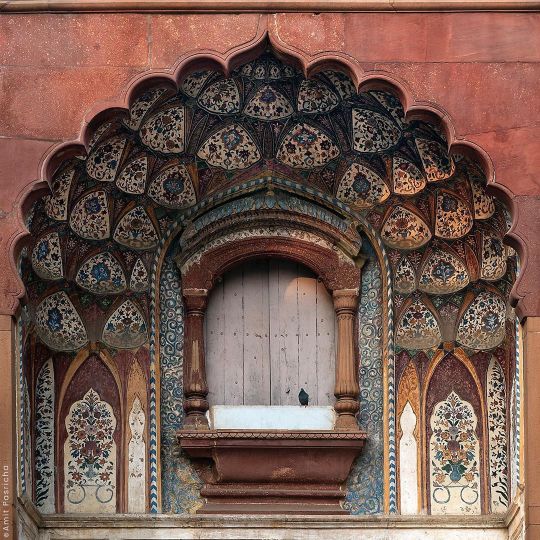
Safdarjung Tomb, Delhi, India
India Lost and Found wrote : Abul Mansur Mirza Muhammad Muqim Ali Khan, better known as Safdarjung (1708 - 1754), was a major figure at the Mughal court. He was a descendant of Qara Yusuf from the Kara Koyunlu (Muslim Turkoman Monarchy). Safdarjung succeeded his maternal uncle, Burhan-ul-Mulk Saadat Ali Khan I (in 1739) to the throne of Awadh and ruled from 19 March 1739 to 5 October 1754.
The Mughal Emperor Muhammad Shah gave him the title of "Safdar Jang". His son Shuja-ud-Daula was recognized as the next Nawab by Emperor Ahmad Shah Bahadur. All future Nawabs of Awadh were the direct descendants of Safdarjung.
The Nawabs of Awadh became the semi-autonomous rulers of the great Mughal Empire (after the death of Aurangzeb). They originally belonged to a dynasty of Persian origin from Nishapur or Neyshabur, Iran. Thought by ILF Expert Nilesh Narayan @holy_waters_india_journeys SAFDARJUNG TOMB, DELHI
(via Instagram: India Lost and Found By Amit Pasricha)
48 notes
·
View notes
Photo

Tributes to Raja Mehdi Ali Khan, the famous Urdu poet, writer, and Hindi film lyricist, on his 54th death anniversary today.
Raja Mehdi Ali Khan was a famed writer and lyricist who rose to stardom within the Hindi film industry in the late 1940s till the 1960s. Khan was greatly influenced by contemporary Urdu poets and writers, the first of which was his mother, Hebay Saheba. He went on to establish himself as a protean lyricist who could pen ballads of romance alongside spirited verses of patriotic fervor with equal ease.
Born in Karmabad (present-day Pakistan), Khan began his early tutoring under his mother Hebay Saheba. Khan then worked under renowned poet Dr. Allama Iqbal. These early influences greatly inspired his poetry. By the 1940s, Khan began working at All India Radio in Delhi. Khan's association with veteran Urdu writer, Sadat Hassan Manto brought him to Mumbai where he started working as a dialogue writer in Hindi film industry. Khan got his first break as a lyricist with Filmistan's film Do Bhai (1946). The songs of the film were very successful and he went on to pen song lyrics for countless films within a short period of time. These included Shaheed (1948), Actress(1948), Vidya (1948), and Ziddi (1948).
Khan's association with music composer, Madan Mohan created some immortal songs in films such as Ada (1961), Mera Saaya (1966), Woh Kaun Thi (1964), Neela Akash (1965), Anpadh (1962) and Nawab Siraj-ud-Daulah (1967) amongst many others.
Raja Mehdi had also been associated with music composers like Khemchand Prakash, Bulo C Rani (Baghdad), S N Tripathi (Hatimtai, Paristaan), Shyam Sunder, Gulam Hyder, S D Burman, Ravi amd Roshan. He has given some wonderful songs with C. Ramchandra (Mere piya gaye Rangoon), O.P. Nayyar (Main Pyar Ka Raahi Hoon) and Laxmikant Pyarelal (for Anita and Jaal).
Raja Mehdi also worked with some lesser known composers like Basant Prakash (Nishan Danka), Iqbal Qureshi, Babul, S. Mohinder (Bekhabar, Paapi), Chic Chocolate (Rangoli), Rono Deb Mukerjhi (Tu Hi Meri Zindagi), Jimmy (Shrimatiji), N Dutta (Bhai Bahen), Nissar Bazmi (Khoj), Dhoomi Khan (Naqabposh), S Haridarshan (Shahi Bazaar), Robin Bannerjee (Masoom), etc.
Raja Mehdi Ali Khan was a close friend of great Urdu writer Saadat Hassan Manto. He wrote a character sketch of him namely “Main, Manto, Kaali Shalwar Aur Dhuwan”. He also wrote a poem in his memory “Jannat Se Manto Ka Ek Khat”.
After a successful career that lasted more than a decade, Khan subsequently withdrew from the Hindi film industry. However, he continued to publish his poetry and short stories such as 'Biswin Sadi', 'Shama Bano' and 'Khilona’ till his death in 1996.
He breathed his last on July 29, 1966, leaving behind a treasure of songs that are still cherished by all lovers of poetry in film songs.
Follow Bollywoodirect बॉलीवुड डायरेक्ट Bollywoodirect
#bollywoodirect #bollywood
4 notes
·
View notes
Text
★ Sultan to Bharat: Salman Khan’s mega success features a Delhi University biochemistry grad!
8 June, 2019
Ali Abbas Zafar is a master at disguising the subtext in the opulent, big-budget spectaculars he has been delivering.

One of Bollywood’s biggest hit-machines is a man who left his home in Dehradun at 16 to study biochemistry at Delhi’s Kirori Mal College, but survived on a diet of Saadat Hasan Manto, Premchand and William Shakespeare. Ali Abbas Zafar has recast Salman Khan’s career with three mega movies, Sultan (2016), Tiger Zinda Hai (2017) and now Bharat (2019).
He is the Salman Whisperer. Son of a father who moved from the Border Roads Organisation to ONGC and a mother who taught English and Urdu at a government school, Ali Abbas Zafar has single-handedly made back-to-back Rs 300-crore movies.
Zafar, 37, is a master at disguising the subtext in the opulent, sometimes noisy, big-budget spectaculars he has been delivering. His early reading shaped his worldview, gave him his belief in equality, in rational thought, and in India’s democracy. His heroes were Bhagat Singh (in Tiger Zinda Hai, Tiger reads a bedtime story about him to his son) and Mahatma Gandhi, and it is no accident that he believes India’s greatest strength is its diversity.
Also read: Salman Khan’s Eid release Bharat finally has him play a character his age — a 70-year-old
Nelson Mandela inspired me, he says. So did the Dalai Lama. “You listen to him and realise how simply he sees the world. The first instinct of all these great men,” he tells ThePrint, “is and was always humane and emotional.”
It’s a message he hopes will reach every last person in the line buying tickets for Salman Khan’s films; and the star clearly trusts him enough to do what is asked of him, whether it is putting on weight to play an out-of-shape boxer on his way to redemption in Sultan or switching from a motorcycle to a horseback to a battered sedan to escape an ISI militant in a town called Ikrit in Tiger Zinda Hai.
Or, play a character embodying the nation in his new film. “Tujh main poora Bharat hai beta,” says his father to a young Salman in Bharat. He asks him to take care of his family, and Salman does precisely that over 70 years of change in India – watching over events from Jawaharlal Nehru’s death to the liberalisation of the Indian economy and its asli hero, Manmohan Singh, along the way working on an oil rig in the Arabian desert, and fighting Somali pirates on the high seas.
Sitting in the atrium of Yash Raj Studios, which has been his home since 2008, Zafar says: “The nation is one big family and by contributing to it, you are contributing to the nation. To say this with a superstar with a mass mainstream following is challenging”.
And so, he focuses on what is humane – Salman as an oil rig worker fights with the American supervisor over quality of food, or the young orphan in the refugee camp in 1947 who refuses to go to Pakistan though he is a Muslim because his father fought for India’s freedom. “I am not interested in propagating one party’s goodness over another. I am interested in remaining true to my characters, to use their narrative to understand the times we are in,” says Zafar. “And I want to leave everyone with hope,” he adds.
So, if Salman played the classic underdog in Sultan, who was fighting the demons within, in Tiger Zinda Hai, he took on an enemy who was threatening to destroy the world with his evil ideology and who could be fought only by uniting India and Pakistan’s forces.
The idea for Bharat came from Salman, says Zafar, who loved the South Korean film, Ode to my Father (2014), and wanted him to adapt it. “I think what appealed to Salman was the idea of one man looking out for his family,” says Zafar, which is similar to the star’s own life.
Zafar’s worldview was cemented by his three years at the Kirori Mal College, not so much because of the course, but because of his involvement with its much-feted dramatic society, The Players. He staged a play annually in college. From then on, working in films was his only obsession.
He was the runner in Lakshya (2004) for 10 days when the Farhan Akhtar film was shot in Delhi, and then assisted Shonali Bose on her film Amu (2005), based on the 1984 anti-Sikh riots. “That’s when I realised the power of cinema to effect social change, how it can create tremendous social consciousness and how it can happen at both ends of the spectrum, from Satyajit Ray to Yash Chopra,” he says.
So, he packed his bags and came to Mumbai to work as an assistant director on Shaad Ali’s Jhoom Barabar Jhoom (2007) and has never looked back. Quizmaster Siddhartha Basu, who was cast in Tiger Zinda Hai, says: “Zafar’s sensibility is grounded in the progressive stream of large canvas commercial cinema, and he’s been developing his story-telling abilities to match that. His focus, discipline and patience have helped him juggle the pulls and pressures of handling big-ticket projects with challenging stakeholders while remaining steadfast to the integrity of his vision”. No small feat in the Hindi film industry.
Zafar credits Aditya Chopra, movie director and chairman of Yash Raj Films, for allowing him the freedom to find his own distinct voice, especially in an environment which has become severely critical of everything. After experimenting with his vision in Mere Brother ki Dulhan (2011) and Gunday (2014), he felt he found his artistic ideal in Sultan.
What is unique about Zafar is also his collaboration with Salman. He believes the 53-year-old’s fans want to celebrate when they see his movies. “They see him as an instant energiser, like a bottle of soda who will douse them with his fizz. They don’t want to be disoriented. I believe there is a very beautiful actor under the skin of the superstar,” says Zafar. “His first instinct is always that of an actor and I have often asked him to do things, which reveal his vulnerabilities. As a director, you cannot judge your actor. You have to be like a parent, take care of the actor while he or she is on the set, between action and cut.”
Salman and he communicate silently, says Zafar, “usually through our eyes”. “We talk only when we have to. We are honest with each other and yes, we do have differences of opinion at times. Sometimes I let him prevail, sometimes he lets me prevail,” he says. But the rise and fall of movies should not affect relationships, he adds, perhaps alluding to rumours of a divide between him and Salman on the final cut of Bharat.
Zafar lives quietly amid the hurly-burly of Bollywood. He is single, obsessed with his travel, his reading, watching TV, and playing sports. “I keep my personal and professional life separate. I don’t try to be anyone’s buddy. I was raised in an isolated way and left home when I was very young. When I am part of a filmmaking team of 200 people, I realise I have to be a team player, but once I am done, I am off,” he says.
No doubt, to think about and create the next blockbuster.
The author is a senior journalist. Views are personal.
2 notes
·
View notes
Photo

Shahnajaf Imambara :: This white domed mausoleum was constructed by Nawab Ghazi-ud-din Haider, the last nawab wazir and the first King of the state of Awadh in 1816 - 1817. It is situated on the bank of the #GomtiRiver near #Sikanderbagh and is a replica of Hazrat Ali's burial at Najaf in Iraq. The silver tomb of Ghazi-ud-din Haider lies in the centre of this building and his three wives are also buried here. It is flanked by the more imposing silver and gold tomb of Mubarak Mahal on one side. Amongst the Nawabs of Awadh, it was the sixth Nawab, Saadat Ali Khan (1798-1814) who proved to be the most efficient in the administration and collection of revenue through the Amani system, introduced by him. He was also the first to set up a royal treasury with a reserve fund, to which he left a sum of fourteen crores at the time of his untimely death, despite his love for horses and construction and purchase of palatial buildings. Some historians believe that his intention of amassing such large wealth was to buy back the territories taken away from him by the British, that earlier formed part of the Nawabi rule in Awadh. One narration asserts that it was the frustration of the British, in not being able to win him over for their financial devices, that the Resident conspired with the unfaithful servants of the Nawab to get him poisoned, resulting in his death on July 12, 1814. The conspiring angle may or may not be true. #shuttersofindia #trailsofindia #indianedition #asoulwindow #nowlucknow #lucknowpahleaap #natgeotravellerindia #lonelyplanetindia #lucknowuniversity #apkalucknow #lucknownawabokashahar #lucknow_mirror #lucknowdiaries #lucknow #landscapephotography #landscape #landscapearchitecture #indialostandfound #lucknowilifestyle #heritagematters #natgeotravellerindia #outlooktravellerindia #natgeoindia #cntravellerindia #travelphotography https://www.instagram.com/p/CcPHctcPJy1/?igshid=NGJjMDIxMWI=
#gomtiriver#sikanderbagh#shuttersofindia#trailsofindia#indianedition#asoulwindow#nowlucknow#lucknowpahleaap#natgeotravellerindia#lonelyplanetindia#lucknowuniversity#apkalucknow#lucknownawabokashahar#lucknow_mirror#lucknowdiaries#lucknow#landscapephotography#landscape#landscapearchitecture#indialostandfound#lucknowilifestyle#heritagematters#outlooktravellerindia#natgeoindia#cntravellerindia#travelphotography
0 notes
Text
THE LOST DESIRE By Saadat Ali Khan
🔥The lost desire🔥 Malicious, furious and malignant, Bossy, bragging and melancholic, Once soft, sonorous and pungent, Calm, serene, compose and frolic. Bucolic, charming, comely coquette, Burning silhouette got the lost desire, Charming Ophelia, finds all in her wicket, Thinks a jump away from an empire, …C 🔥Ophelia 🔥 … By Saadat Ali Khan Noahani…

View On WordPress
0 notes
Text
The understudies of Aligarh Muslim University, or Amu Notable Alumni

Spread from one side of the earth to the other. Also, as Sir Syed read when the establishment gravestone of MAO College was being set down, "The little factory will one day transfigure into a important tree whose branches will spread everyplace." AMU was and still is a special hassle. It is not simply a phenomenal seat of upper literacy, still, because of its private person, one offers 5 to 10 times of one's actuality with individualities of an indistinguishable age group.
Participating everything, living, eating, and concentrating together, sets up the scores of an hardly woven family, and this regularly enlivens the Aligarians. As they return, at whatever point conceivable, theyre-establish the fun of the former days of their nonage and revive their common prospects and norms, consequently the well- known "Aligarh Spirit". All members of the society at AMU call themselves "Aligs" or "Aligarians", whether or not they're understudies, preceptors, or other staff working at the university.
famous AMU Personalities are there:
Mohammad Hamid Ansari
Sheikh Abdullah
Arif Mohammad khan
Naseeruddin Shah
Zakir Hussain
Jawed Akhtar
Lala Amarnath
Anubhav Sinha
Saadat Hassan Mant
Mufti Mohammad Sayeed
Majid Hussain
Mohammad Azam Khan
Frank Islam
Liaqat Ali Khan
Khan Abdul Gaffar
Major Dhyan Chand
Ashok Seth
and there are many more
1 note
·
View note
Text










Farhat Baksh Kothi
General Claude Martin erected Kothi Farhat Baksh in Indo-French style on the right bank of Gomti as his own residence in 1781. It was known as 'Martin Villa'. It was later purchased by Nawab Asaf-ud-daula. Nawab Saadat Ali Khan (1798-1814), during his serious illness, was advised by the British Resident to shift into this building. He shifted and resumed his health and renamed this building as Farhat Baksh (pleasure-giving). It has a basement as well which was built to rescue from extremely hot summers. The building has square designs in Gothic style. Later on Nawab Saadat Ali Khan is said to have further beautified it.
Sadly it now lies abandoned and unattended.
#Lucknow #LucknowHeritage #Kothi #FarhatBakshPalace #ClaudeMartin #Abandoned
0 notes
Text
Tomb of Saadat Ali Khan and Khurshid Zadi
Tomb of Saadat Ali Khan and Khurshid Zadi
The tomb of Saadat Ali Khan and his wife Khurshid Zadi are one of the very less populous places amongst many in the city of Nawabs, Lucknow. Nestled in the heart of the Lucknow, this place is adjoining to the Begum Hazrat Mahal Park on the Rani Laxmi Bai Road, well marked on Google Maps. This place is managed and caressed by Hussainabad Trust.
Saadat Ali Khan was the 6th emperor of Oudh or…
View On WordPress
#city of nawabs#historical architecture#hussainabad trust#indian monuments#indian travel bloggers#khurshid zadi#local travels#misfit wanderers#saadat ali khan#tomb of khurshid zadi#tomb of saadat ali khan#travel blogger#Travel Experiences#up nahi dekha to india nahi dekha#up tourism
0 notes
Photo





Tomb of Saadat Ali Khan and Khurshid Zadi, Lucknow (via The Wanderer by Siddhartha Joshi)
117 notes
·
View notes
Text







These facts about Safdarjung Tomb will amaze you !!!
Read it here - https://www.livingwithabhi.com/post/have-you-ever-been-to-safdarjung-tomb
Safdarjung's Tomb
Safdarjung's Tomb, situated in Delhi, is uncommon from numerous points of view. It is viewed as the last glint of wonder from the Mughals, an administration that made the absolute most amazing landmarks actually standing, including India's work of art the Taj. Other than being the last essential articulation of Mughal design, as of late a couple more reasons were added for you to visit the eighteenth-century burial place of Safdarjung.
On the off chance that you visit this landmark now, you will actually want to see the amazing landmark as well as its appearance. The Archeological Survey of India as of late resuscitated the long-outdated water channels and wellsprings around the landmark. This water body, which was important for the first arrangement, has added another measurement to the excellence of the landmark.
Moreover, Safdarjung's Tomb is one of two landmarks as of late lit up by the ASI, the other being Qutub Minar. In this way, as the sun sets the landmark is all up in lights.
When was it fabricated: 1754
Who constructed it: Nawab Shujaud Daula
Where is it situated: At the Intersection of Safdarjung Road and Aurobindo Marg, New Delhi, India
For what reason was it fabricated: Built as a tomb of Safdarjung
Compositional Style: Mughal Empire style
Visit Timing: Daily, Sunrise to Sunset
The most effective method to Reach: One can benefit taxis, auto-carts, neighborhood transports from various places of the city to arrive at the Garden Tomb; profit metro – closest station Jor Bagh; benefit directed visits orchestrated by travel services and lodgings that remember touring of the landmark for their schedule.
Overview
The Safdarjung Tomb likewise alluded to as 'Safdarjung Ka Maqbara' is a nursery burial place in New Delhi, India, made of marble and sandstone and implicit the late eighteenth century as the sepulcher of Safdarjung, a legislator who stayed the Wazir ul-Hindustan (Prime Minister of India) during the rule of Ahmad Shah Bahadur. This sepulcher worked by Safdarjung's child Nawab Shujaud Daula stays the last amazing nursery burial place portraying Mughal engineering style. Situated at the intersection of Safdarjung Road and Aurobindo Marg (Road) in New Delhi close to Safdarjung Airport, this verifiable landmark has stayed a famous place of interest pulling in both Indian and unfamiliar sightseers visiting the capital city of India.
History
Safdarjung, a Persian local and a relative of Qara Yusuf from the Kara Koyunlu, was brought into the world as Muhammad Muqim in-Khurasan in 1708 AD. In 1722 AD, he migrated to India. He turned into the Subadar Nawab of Oudh that is the leader of the territory of Oudh or Awadh area on March 19, 1739, succeeding his maternal uncle turned dad-in-law Burhan ul Mulk Saadat Ali Khan I, apparently paying off Nadir Shah with twenty million rupees. He served the situation for the duration of his life. Ruler Nasir-ud-Din Muhammad Shah presented to him the title of "Safdarjung".
Following the downfall of the Emperor, his child Ahmad Shah Bahadur rose to the seat as the new Mughal Emperor in 1748. The always incredible and clever legislator Safdarjung demonstrated his determination as a capable director moved to Delhi where he was made the Wazir ul-Mamalik-I-Hindustan or Prime Minister of Hindustan. From 1750 to 1754 he stayed the Subahdar of Assam. He was additionally made the legislative head of Ajmer. Be that as it may, because of court governmental issues, he was excused in 1753 and removed from Delhi. In December 1753 he got back to Oudh. On October 5, 1754, he died in Sultanpur close to Faizabad. The Mughal Emperor conceded the request of his child Nawab Shujaud Daula to permit the last to build a sepulcher of his dad in Delhi. Development of the burial chamber was finished in 1754.
Impression of Mughal Architectural Style
The Safdarjung Tomb, planned by an Ethiopian draftsman denotes the last gigantic nursery burial place of the Mughals. Albeit the Safdarjung Tomb was planned and developed in accordance with the popular verifiable landmark, Humayun's Tomb, the burial chamber of Mughal Emperor Humayun in Delhi, it needed both greatness and style contrasted with the last mentioned. The catacomb built on a raised stage is encircled by an immense square nursery estimating 280 meters (920 ft) on each side with a patio and a three-domed mosque housed inside the compound that is encased inside a divider.
The burial chamber that is worked of red and earthy yellow shaded sandstone has a high patio and is covered with a huge focal arch. Chunks from the sepulcher of Abdul Rahim Khankhana were utilized in its development. The two-celebrated primary passage entryway of the tomb gives a brilliant perspective on the landmark. Mind-boggling plans are made on its façade, the posterior of which houses a few rooms and a library. A deciphered rendition of an Arabic engraving scratched on its surface peruses "When the legend of plain boldness leaves from the momentary, may he become an inhabitant of god's heaven". Its square-formed focal chamber has a midway positioned cenotaph and 8 segments. Ornate mortar is utilized in the decorated inside of the sepulcher. The rubble dividers inside the burial place enhance a few discouraged curves as likewise octagonal-molded 'Chattris' or pinnacles on every one of the four corners. Dominatingly the burial place has rectangular chambers with the corner chambers being octagonal fit as a fiddle. Four polygonal pinnacles with stands are put at each edge of the primary burial place. The real graves or internment loads of Safdarjung and his significant other Amat Jahan Begum are set in an underground office of the landmark.
The tremendous nursery incorporating the sepulcher, planned in accordance with the customary charbagh garden style of the Mughals, is isolated into four squares with pathways and water waterways around them. Each square is again partitioned into four more modest nurseries. One of the water waterways prompts a richly enriched door while different prompts three structures specifically 'Jangli Mahal' or 'Royal residence in the forested areas, 'Badshah Pasand' or 'The Emperor's Favorite' and 'Moti Mahal' or 'Pearl Palace'. As per authentic information, these structures were once utilized as homes by the group of Safdarjung, at present house workplaces of the 'Archeological Survey of India' (ASI). The whole tomb is by and by heavily influenced by the ASI which likewise keeps up the library situated over the fundamental entryway.
A Visit to the Garden Tomb
This excellent nursery burial chamber situated at the intersection of Safdarjung Road and Aurobindo Marg (Road) in New Delhi, India, stays open to guests throughout the day from dawn to dusk. Section charges per individual for Indian residents is Rs. 15/ - and for outsiders is Rs. 200/ -. The section is free for youngsters as long as 15 years old. While still camera photography is complimentary, Rs. 25 is charged for every camcorder.
Places To Visit Near Safdurjung Tomb
You can stop by Lodi Garden, a popular Delhi tourist attraction. Spread over 90 acres, it is home to Mohammed Shah’s Tomb, Tomb of Sikandar Lodi, Shisha Gumbad, and Bara Gumbad. If you’re a shopping enthusiast, you’re in for luck. Khan Market, Delhi’s mecca for brand-conscious shoppers, is only a stone’s throw away. You can shop for silver jewelry, electronics, and branded clothes, among other things.
Interesting Facts About Safdurjung Tomb
Safdarjung Tomb attracts travelers from around the world who are curious about the decline of the Mughal era. Here are 4 Safdarjung tomb facts you must be aware of before visiting the structure:
The architecture of the Safdarjung tomb is derided for use of poor material for construction.
There is an inscription in Arabic on the tomb which reads as: “When the hero of plain bravery departs from the transitory, may he become a resident of god’s paradise”.
The tomb, though built in the style of the Taj Mahal, lacks symmetry as the vertical axis has been given prominence, which gives it an unbalanced appearance.
The marble and red sandstone used for this structure are said to have been removed from the tomb of Abdur Rahim Khan-I-Khanan.
Tips To Travelers
Safdarjung Tomb is a testimony to the city’s grandeur and gives an interesting peek into Delhi’s glorious past. Here are a few tips and pointers you should keep in mind if you plan to visit the monument.
Paying for a local guide is recommended if you seek in-depth information about the monument.
Don’t forget to carry a water bottle to keep yourself hydrated.
Ditch the heels for shoes as the terrain is mostly uneven.
The places to eat in the vicinity are known to overcharge tourists, so we advise you to carry your own snacks.
Good To Know
The 2013 American true to life dramatization 'Occupations' coordinated by Joshua Michael Stern and featuring Ashton Kutcher, Dermot Mulroney, and Josh Gad among others was recorded in the burial place.
Conclusion
Surprisingly, each and every point in the complex is utterly symmetrical to other points and together they all blend to form a beautiful mesh of curves, lines, floral patterns, and arrangements.
I captured the beauty and serenity of the place to my heart’s content without the cheeky visitors and tourists treading into my frame.
It isn’t just enough to witness the beauty but to observe the details from diverse perspectives, especially when taking pictures; I took many photographs from every imaginable spot so much so that spider webs stuck to my hair and dress!
The site boasts an ambiance of unruffled tranquility as it normally has few ASI staff members, guards, and calculable tourists.
Ah! Not to forget the troop of monkeys and muster of colorful peacocks. We spotted a peacock dancing and stood there awestruck.
But the chances of seeing peacocks are only when one visits early in the morning as we did.
Couples finding solace come here to escape from the people’s snoopy and judgmental eyes (I’ve been observing during my visit to different places in Delhi that secluded historical ruins and places are kinds of Promised Land for lovers).
#safdarjung #safdarjungtomb #delhi #delhimonuments #travel #traveller #travelling #travelblog #travelgram #traveladdicted #traveladdict
#traveladdiction #delhiblogger #delhibloggercommunity #delhincr #delhigram #travelwithme #traveldiaries #traveltheworld #travelwithus #travelwithfriends #travelwithpurpose #travelwithfriends
#safdarjung#safdarjungtomb#delhi#delhimonuments#travel#traveller#travelling#travelblog#travelgram#traveladdicted#traveladdict
0 notes
Photo

Tributes to Raja Mehdi Ali Khan, the famous Urdu poet, writer, and Hindi film lyricist, on his 91st birth anniversary today. Raja Mehdi Ali Khan was a famed writer and lyricist who rose to stardom within the Hindi film industry in the late 1940s till the 1960s. Khan was greatly influenced by contemporary Urdu poets and writers, the first of which was his mother, Hebay Saheba. He went on to establish himself as a protean lyricist who could pen ballads of romance alongside spirited verses of patriotic fervor with equal ease. Born in Karmabad (present-day Pakistan), Khan began his early tutoring under his mother Hebay Saheba. Khan then worked under renowned poet Dr. Allama Iqbal. These early influences greatly inspired his poetry. By the 1940s, Khan began working at All India Radio in Delhi. Khan's association with veteran Urdu writer, Sadat Hassan Manto brought him to Mumbai where he started working as a dialogue writer in Hindi film industry. Khan got his first break as a lyricist with Filmistan's film Do Bhai (1946). The songs of the film were very successful and he went on to pen song lyrics for countless films within a short period of time. These included Shaheed (1948), Actress(1948), Vidya (1948), and Ziddi (1948). Khan's association with music composer, Madan Mohan created some immortal songs in films such as Ada (1961), Mera Saaya (1966), Woh Kaun Thi (1964), Neela Akash (1965), Anpadh (1962) and Nawab Siraj-ud-Daulah (1967) amongst many others. Raja Mehdi had also been associated with music composers like Khemchand Prakash, Bulo C Rani (Baghdad), S N Tripathi (Hatimtai, Paristaan), Shyam Sunder, Gulam Hyder, S D Burman, Ravi, and Roshan. He has given some wonderful songs with C. Ramchandra (Mere piya gaye Rangoon), O.P. Nayyar (Main Pyar Ka Raahi Hoon) and Laxmikant Pyarelal (for Anita and Jaal). Raja Mehdi also worked with some lesser-known composers like Basant Prakash (Nishan Danka), Iqbal Qureshi, Babul, S. Mohinder (Bekhabar, Paapi), Chic Chocolate (Rangoli), Rono Deb Mukerjhi (Tu Hi Meri Zindagi), Jimmy (Shrimatiji), N Dutta (Bhai Bahen), Nissar Bazmi (Khoj), Dhoomi Khan (Naqabposh), S Haridarshan (Shahi Bazaar), Robin Bannerjee (Masoom), etc. Raja Mehdi Ali Khan was a close friend of great Urdu writer Saadat Hassan Manto. He wrote a character sketch of him namely “Main, Manto, Kaali Shalwar Aur Dhuwan”. He also wrote a poem in his memory “Jannat Se Manto Ka Ek Khat”. After a successful career that lasted more than a decade, Khan subsequently withdrew from the Hindi film industry. However, he continued to publish his poetry and short stories such as 'Biswin Sadi', 'Shama Bano' and 'Khilona’ till his death in 1996. He breathed his last on July 29, 1966, leaving behind a treasure of songs that are still cherished by all lovers of poetry in film songs.
4 notes
·
View notes